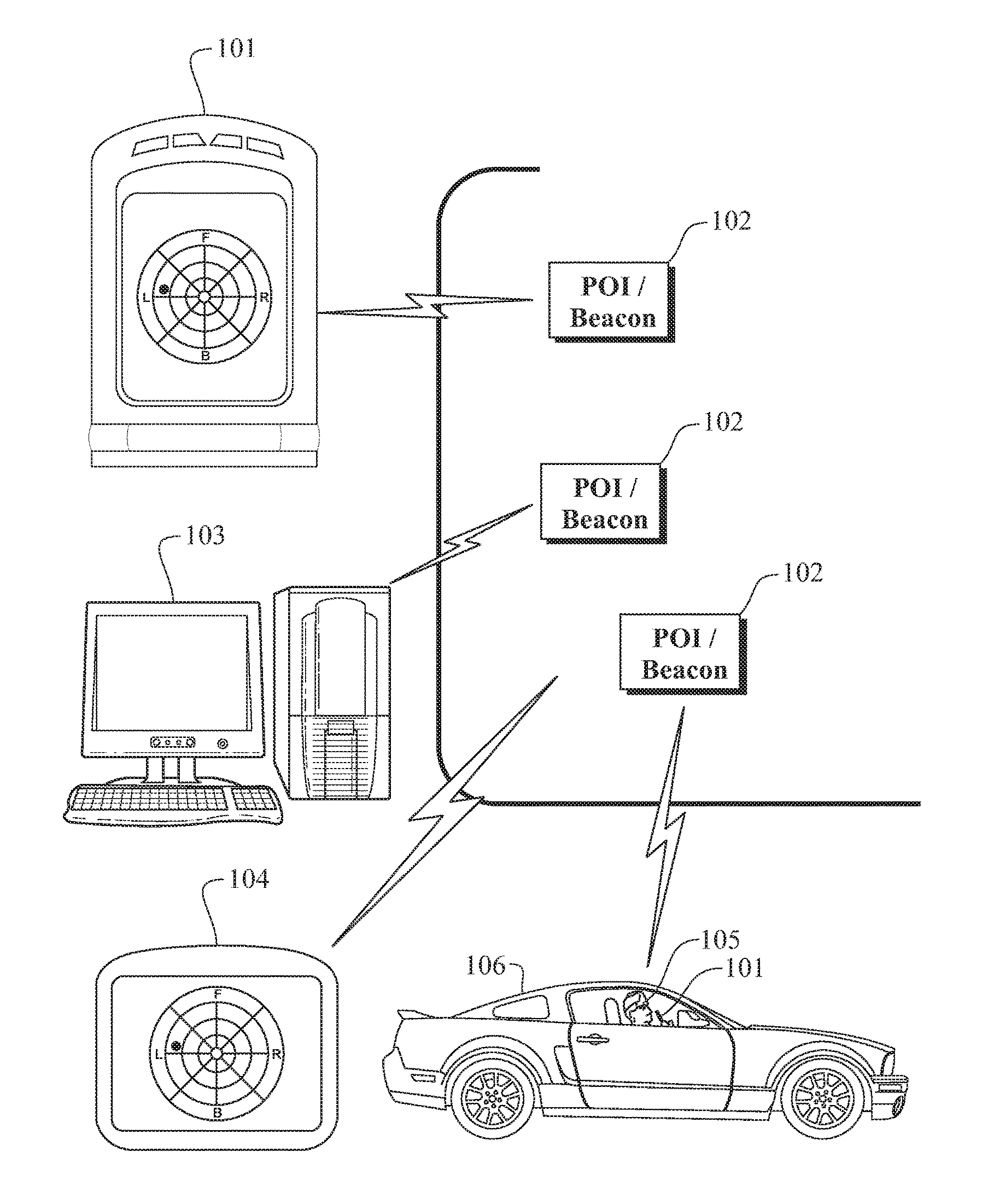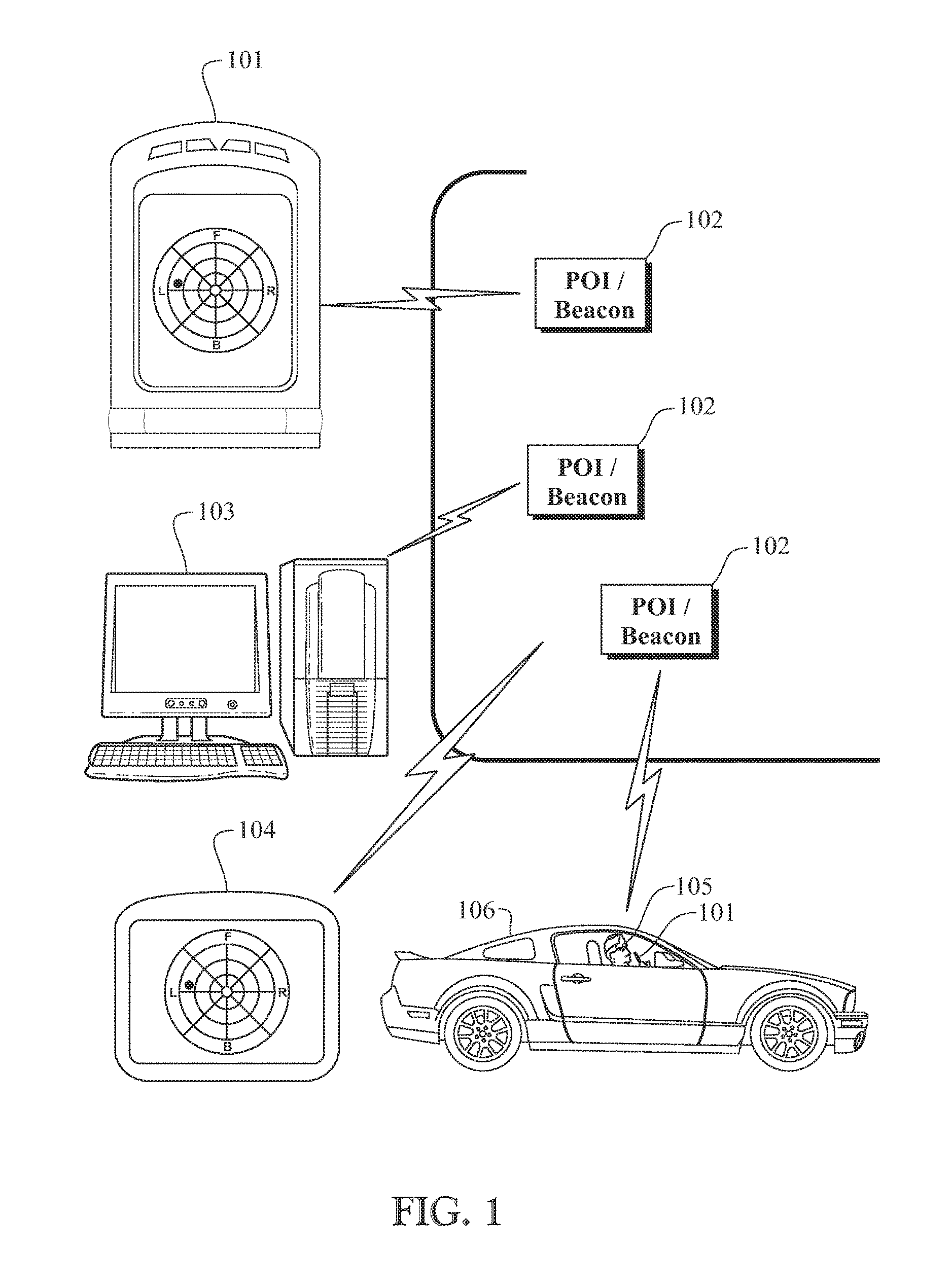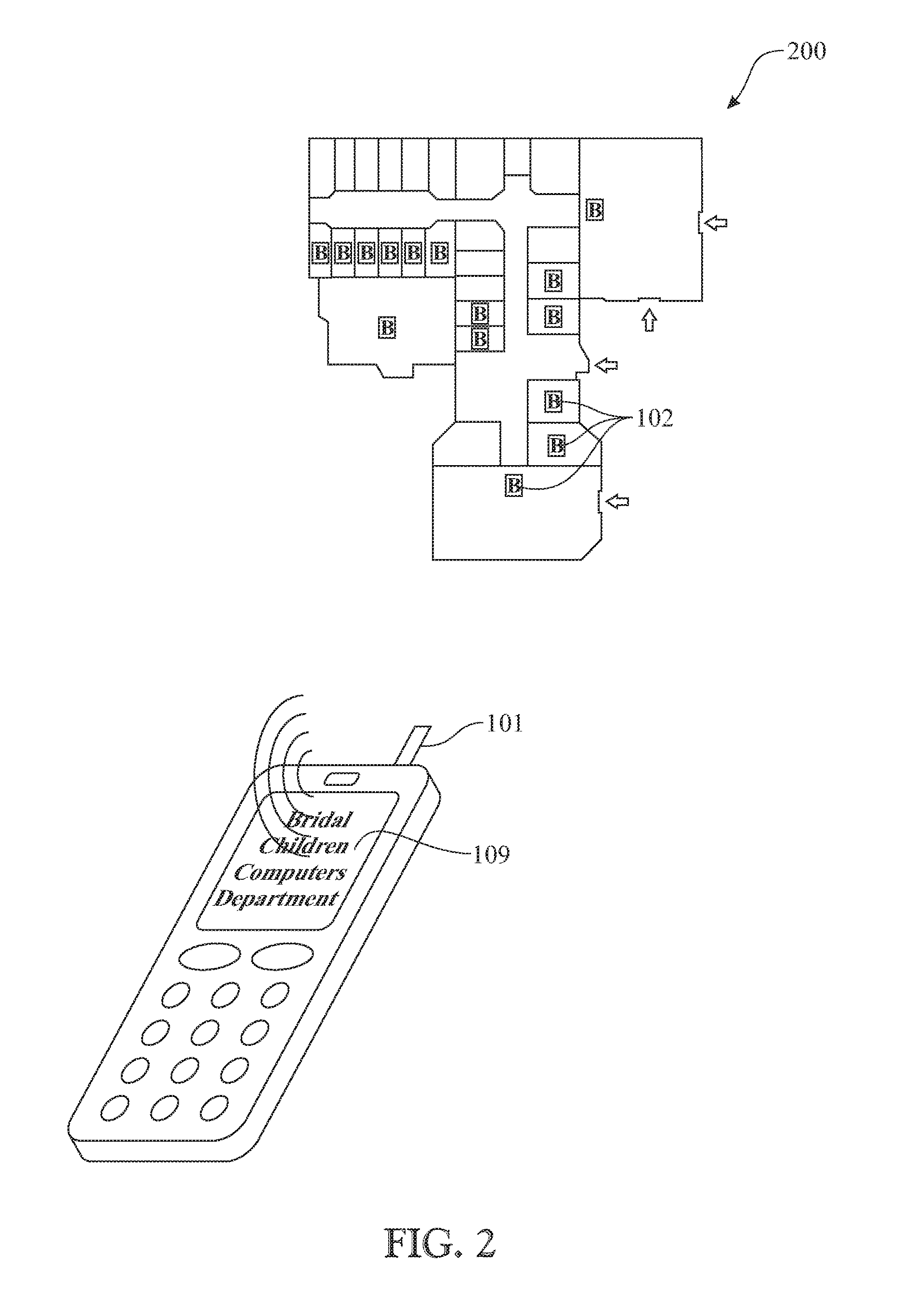Beacon deployment for use with location based services (LBS)
a technology of location based services and beacons, applied in the field of beacons, can solve the problems of inability to utilize prior art devices to display real-time representations of navigating directly from sensors without a central system, inability to meet the needs of users,
- Summary
- Abstract
- Description
- Claims
- Application Information
AI Technical Summary
Benefits of technology
Problems solved by technology
Method used
Image
Examples
Embodiment Construction
[0664]In all the figures of the drawings, subfeatures and integral parts that correspond to one another bear the same reference symbol.
[0665]Referring now to the drawings in detail and first particularly to FIGS. 1-13 thereof.
[0666]An exemplary flowchart illustrating a use of Radio Frequency (RF) tags or beacons 102 is presented in FIG. 1. The Radio Frequency (RF) tags or beacons 102 can utilize at least one of Bluetooth and Wi-Fi signal protocols. The exemplary system utilizes a mobile cellular telephone or other suitable mobile device 101 to scan and detect a proximity of an installed Radio Frequency (RF) tag or beacon 102 in the most part for determining a location of the user, assumed to be the same location as the user's cellular telephone 101 in an indoor environment or an outdoor environment. The location in determined by identifying the installed Radio Frequency (RF) tag or beacon 102 in the vicinity of the user's cellular telephone 101, and then using the known location of ...
PUM
 Login to View More
Login to View More Abstract
Description
Claims
Application Information
 Login to View More
Login to View More - R&D
- Intellectual Property
- Life Sciences
- Materials
- Tech Scout
- Unparalleled Data Quality
- Higher Quality Content
- 60% Fewer Hallucinations
Browse by: Latest US Patents, China's latest patents, Technical Efficacy Thesaurus, Application Domain, Technology Topic, Popular Technical Reports.
© 2025 PatSnap. All rights reserved.Legal|Privacy policy|Modern Slavery Act Transparency Statement|Sitemap|About US| Contact US: help@patsnap.com



